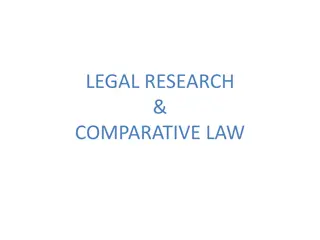Achieving Human Rights and Development in Developing States: A Comparative Analysis
Human rights and development in developing states are crucial components, with a focus on economic and social development models. The discussion covers the concept of human development, state development, Sustainable Development Goals, comparisons between Tamil Nadu, Gujarat, and Kerala, and expert opinions on policies and investments for sustainable growth and social welfare. The analysis highlights the importance of investing in industries like textiles and tourism for economic development and the need for social welfare schemes to promote social development.
Download Presentation

Please find below an Image/Link to download the presentation.
The content on the website is provided AS IS for your information and personal use only. It may not be sold, licensed, or shared on other websites without obtaining consent from the author.If you encounter any issues during the download, it is possible that the publisher has removed the file from their server.
You are allowed to download the files provided on this website for personal or commercial use, subject to the condition that they are used lawfully. All files are the property of their respective owners.
The content on the website is provided AS IS for your information and personal use only. It may not be sold, licensed, or shared on other websites without obtaining consent from the author.
E N D
Presentation Transcript
WHAT IS THE BEST MODEL FOR ACHIEVING HUMAN RIGHTS IN A DEVELOPING STATE? ECONOMIC DEVELOPMENT vs SOCIAL DEVELOPMENT
WHAT IS DEVELOPMENT? Human development refers to the biological and psychological development of the human being throughout the lifespan. It consists of the development from infancy, childhood, and adolescence to adulthood. Then what does State Development mean?
Graphic comparison between Tamil-Nadu and Gujrat 25% 20.70% 19.67% 20% 16.63% 15% 11.28% 10% 8% 7.31% 7% 6.49% 6.09% 5% 0% Contribution in the GDP Population under the poverty line Illitrerate Population Tamil Nadu Gujrat Kerala
GUJRAT VS KERALA JAGDISH BHAGWATI The policies need to focus on growth, resources can be generated which can then be invested in social sector schemes -health, education & so on. Initially growth may raise inequalities. However a sustained growth will raise enough resources for the State to redistribute and reduce the ill effects of the initial inequality AMARTYA SEN India should invest more in social infrastructure to increase productivity of its people & thus raise growth. Investing in health & education will improve human capabilities. Unhealthy & uneducated labour cannot produce memorable growth rates. Without such investments inequalities will widen & the growth process will eventually falter.
TAMIL-NADUSMODEL TRUMPS GUJRATS AND KERALASMODEL Economic Development Increase in investment in automotive Industry. Textile Industry. Promotion and investment in renewable energy. Social Development Fair distribution of wealth between the rich and poor. Welfare schemes and programmes to increase literacy. Increase in employment opportunities for minorities.
CAUSES OF ECONOMIC DEVELOPMENT TEXTILE INDUSTRY Largest textile hub of India. Provides direct employment to an estimated 35 million people, and thereby contributing 4% of GDP and 35% of gross export earnings. Contributes to 14% of the manufacturing sector in India. TOURISM In 2010, emerged as one of the leading tourist destinations. Annual growth rate of industry is 16%, which was heighest amoung all the other states until 2010
CAUSES OF SOCIAL DEVELOPMENT KARUNANIDHI S EXPERIMENTS WITH RESERVATIONS Extra marks for those who didn t have a graduate in the family (1990) Reservation for Muslims out of the backward class reservation (2007) Pro-Dalit stance by increasing reservation. (!971) KAMRAJ S MID DAY MEAL Expanded the reach of free education across the state by providing free lunch. Indirectly resolving food scarcity issues.
CONCLUSION The Tamil-Nadu model is a successful example of appropriate economic policies that are expressively inclusive of social development. On the Economic front, the model focuses on rate of change rather than level of change. Whereas, on the social front, the model focuses of removing inequalities by providing free education and through positive discrimination.























